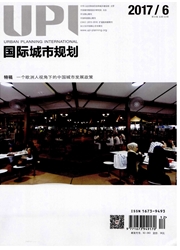

 中文摘要:
中文摘要:
在社会经济转型背景下,我国传统的自上而下的政策制定模式已经无法适应公民社会发展的要求,近年来关于大型公共基础设施被迫停建、迁建的邻避冲突不断发生,就是典型表现。但同样是垃圾焚烧厂扩建工程所引发的邻避冲突——北京的阿苏卫事件,社区居民与政府在解决过程中由对抗到对话,最后合作促成了《北京市生活垃圾管理体例》的出台。本文以此事件为例,通过媒体对该事件过程的报道以及对主要参与者的访谈,从政策网络的视角分析多元行动主体互动下的公共政策制定过程。运用政策网络理论的核心观点,本文具体分析了“阿苏卫事件”中行动者、各行动者的行动策略以及各行动者的互动行为对政策改变产生的影响,进而说明网络结构的改变和网络中行动者行为策略的选择变动都将影响最终的政策结果,导致政策变迁。希望通过谊案例的深入研究,能为当前政府处理类似公共事件和制定公共政策提供借鉴。
 英文摘要:
英文摘要:
In a time of social and economic transformation, China's traditional top-down policy making method does not fit with the needs of the citizens. In recent years, many large scale infrastructures constructions are forced to stop and NIMBY Incidents frequently occur, which are the reflection of such a tension. Asuwei is the name of a village in Changping County in the city of Beijing, and a garbage disposal site. Since July of 2009, the attempt of Beijing municipal government to build a large scale garbage incineration site aroused strong resistance from the neighborhood, escalated into collective action, and becomes a very well-known NIMBY incident - Asuwei Incident. The final result of this incident is the issuance of "Beijing Statute on Living Garbage Management". This paper studies and analyzes this case by the ways of interview and survey of participants and on-site observations. A policy network analytical framework is used to examine the process that led to eventual policy making and reveal the significance of this process to China's public administration and policy making.
 同期刊论文项目
同期刊论文项目
 同项目期刊论文
同项目期刊论文
 期刊信息
期刊信息
